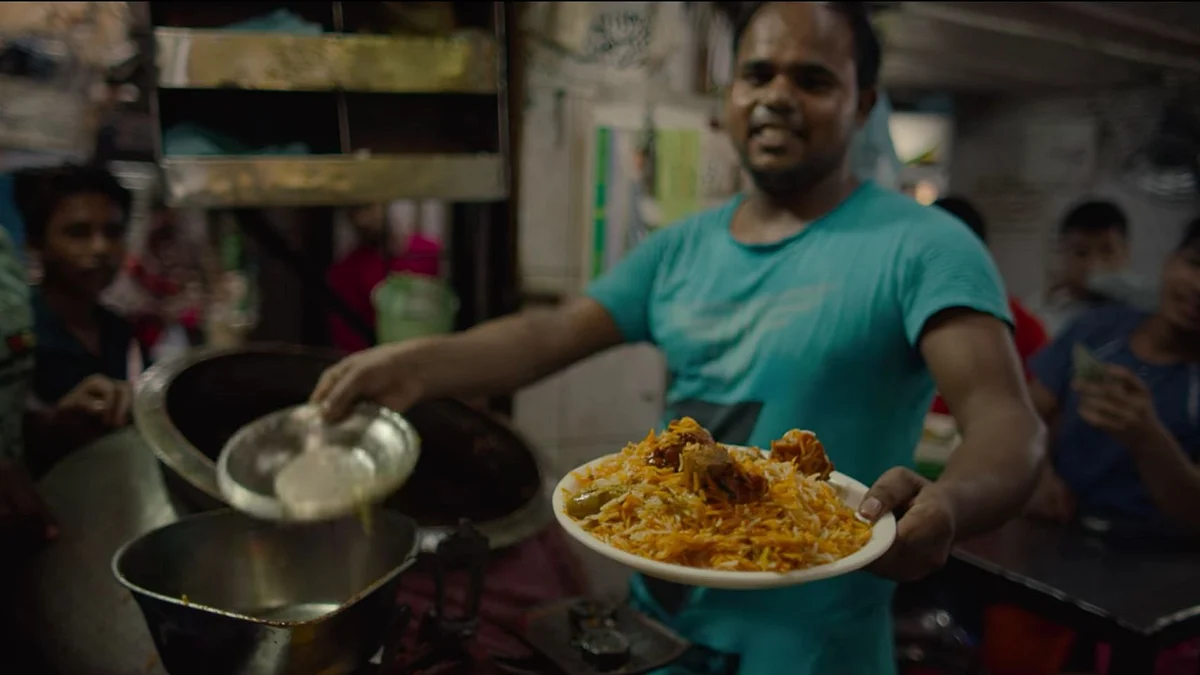‘Street Food’ Celebrates Behind-the-Scenes Stars of the Food World
Food writer Kalyan Karmakar reviews ‘Street Food’ on Netflix.

advertisement
“As soon as you come to Delhi, the first thing that hits you is the colour,” says historian Rana Safvi at the start of the Delhi episode of the Netflix series, Street Food, and this sets the tone for what follows.
The colours of Delhi, its by-lanes, its buildings, its people and above all, its food, hold you in their spell for the next thirty minutes or so. As someone who is mesmerised by Delhi’s vibrant food culture, this episode brings back happy memories of the time that I have spent eating in the city. The vibrant red of the nihari at Kallu Miya’s grabbed my attention. I was pleased to see the shop being as crowded as I remembered it to be from my visit to it a few years back. Kallu Miya, whom I had met then, is no more but his young son’s pride in taking his father’s legacy ahead seems to tell you that all is well with the world.
When it comes to street food based TV shows, there is always the temptation to compare them with the late Anthony Bourdain’s No Reservations series, the polestar for many. No Reservations was a narrator based series. One got to see the world through Bourdain’s eyes. The world view is his.
Street Food is different. It romances its subjects and their settings, without romanticising them. It is the camera that draws you in here. The music too. It is the director’s narrative that leads you through the story. There’s no central on camera anchor for the series.
The rather generically named Street Food is made by the makers of the acclaimed Netflix series, Chef’s Table and of the ground breaking documentary, Jiro Dreams of Sushi. They bring their documentary style of film making to Street Food too along with great cinematographic skills.
Each episode focuses on the life of one protagonist from the city. Dalchand, the chaatwala, in the case of Delhi. There are a few shorter interludes showing a few other street food stars from the city to supplement the story. You get to hear the life philosophies and subsequent food philosophies of these unsung heroes who, unlike the well acclaimed subjects in the Chef’s Table series, are often unknown outside of the circle they operate in.
Supporting the street food wizards in their story-telling is a mix of local food experts…historians, writers, bloggers… who give context and help complete the story.
The absence of seasoned TV anchors also means that the narrative can veer towards the melodramatics of a Masterchef India show or the dryness of a UGC countrywide education-like academic show at times, as in the case of the Delhi episode. This could weaken the story-telling but the earnestness with which everyone on screen talks and shares from their lives ensures that the series sails through. It is the heart that is important as they say and nowhere is this more true than in the world of street food.
The show does not aim to be the ultimate guide to eating out in a city or about making new discoveries. Nor does it aim to deconstruct dishes or their etymology. It is all about personal narratives here.
Which is why in the Delhi episode it is not about whether showing the seekhs at Al Jawahar’s over Kareem’s would have been a better idea, or that at Moinuddin’s over both. Or whether the UPSC chaat guy would have been a better bet than Dalchand or whether the bhature at Sitaram Diwanchand’s should have been shown instead of the one at Nand Di Hatti.
What matters at the end is that it entices you to explore drop everything and explore the streets of Delhi through its food. As the series does for the other cities in the series. Over 9 episodes of 30 minutes each, Street Food travels to Thailand, Japan, Indonesia, Taiwan, South Korea, Vietnam, Singapore, Philippines and of course, India.
That to me, is a job well done.
(Kalyan Karmakar is a Mumbai based food and travel writer and is the author of The Travelling Belly.)
(At The Quint, we question everything. Play an active role in shaping our journalism by becoming a member today.)